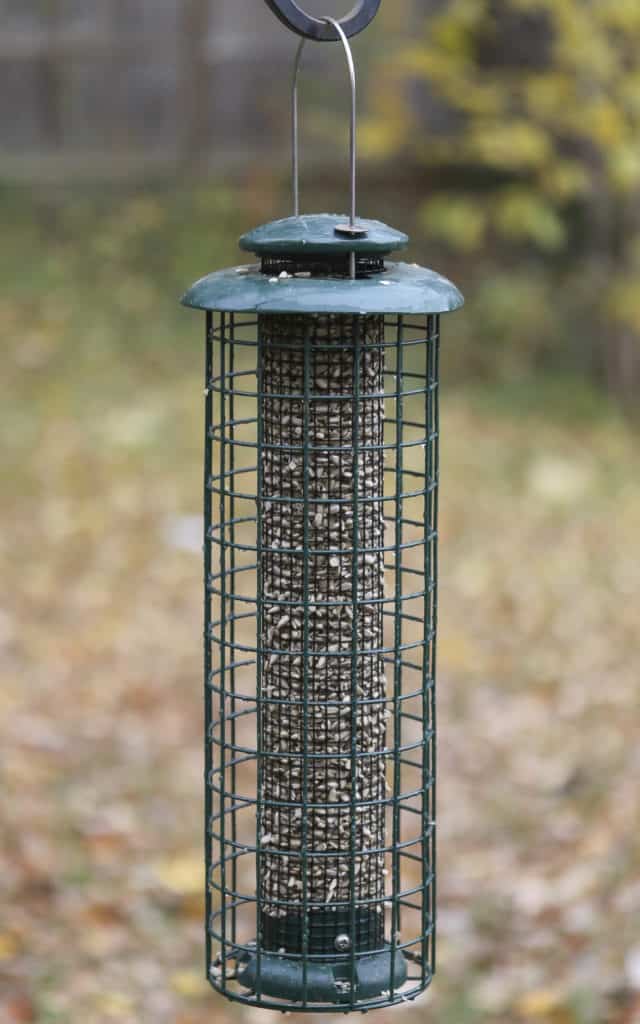Creature Feature
Feeding the Birds
By Wayne Bierbaum
Fall is the best time to consider putting out bird feeders. Birds are more stressed in the winter and will welcome an easy meal. The Cornell Lab of Ornithology has a program for monitoring birds at feeders called Project FeederWatch. More than 20,000 people participate in FeederWatch, which has been gathering data for over 30 years. The data has shown that many bird species thrive because they are being fed in the winter, while species that usually avoid feeders seem to be in decline. One example is the red-bellied woodpecker, a common feeder visitor, which is thriving when compared to the pinyon jay, which is rarely at bird feeders, and whose population is progressively in decline.
It has been estimated that over 52 million American households feed wild birds, which amounts to $4 billion spent on one billion pounds of seed. But all the interest in feeding birds has a downside. As they collect around feeders and birdbaths, the birds can exchange illnesses or become sick from spoiled food.
The two most common illnesses associated with feeders are house finch eye disease (also called Mycoplasmal conjunctivitis), which frequently causes blindness, and salmonella, which can cause death. Many other diseases are spread at bird feeders including trichomoniasis, pigeon paramyxovirus, and avian pox. Spoiled bird food can contain staphylococcus bacteria or a fungus called aspergillus.
To reduce the risk of illness to wild birds it is important to perform routine feeder maintenance. Rake under the feeders about twice a week. Wash the feeders about every two weeks and dip or spray with diluted bleach or 50 percent ethyl alcohol and rinse. If a bird at a feeder appears ill, then remove all feeders, clean them and wait a week before putting them up again. Try to put out only enough food to last a week. If you have more than one feeder, spread them out to prevent crowding.
I have three feeder types that I like. One is a platform feeder with or without a gravity auto feeder. They have a flat mesh that holds the food. They are easy to clean and fill. I use them with dried mealworms for bluebirds and safflower seeds (which squirrels don’t like) for the seed-eaters.
The second feeder is made of wire mesh with mesh central portholes that hold black sunflower seeds (see photo). Unfortunately, it creates a lot of ground debris and the squirrels really like it. Squirrels have chewed through the wire to cause the seeds to rapidly drain out. I have woven wire into it to plug the holes.
My last and favorite is the sunflower kernel feeder. The one I have come from Audubon. It is a medium-fine wire mesh tube inside a wire cage that prevents squirrels from getting to the food. Last winter I had a steady crowd of pine siskins coming to that feeder. The downside to it is that it also creates a lot of fine ground debris that doesn’t rake well and I end up moving the feeder around to prevent spoiled food on the ground.
If you use thistle feeders for finches, buy small quantities of seeds at a time and do not overfill the feeder. Finches seem to only eat relatively fresh thistle seed.
Avoid putting any seed feeder too close to your house as it can attract mice, skunks, etc. If you have a feeder close to a structure then use a device to catch the falling seed.
Feeding birds is fun to do. I have some favorite winged visitors, like five years ago when I had a Baltimore oriole visit for three winters in a row or the group of red-breasted nuthatches that spend several weeks here or last year’s pine siskins.
Putting up a bird feeder comes with responsibility. Do your best to keep wild birds healthy. Remember that you are not allowed to rehabilitate a wild animal and it must be under the direct supervision of a wild animal specialist. Report an ill or injured bird to DNR WildlifeServices toll-free at 1-877-463-6497 or a private rescue service like Second Chance Wildlife Center in Gaithersburg 301-926-WILD (9453).


